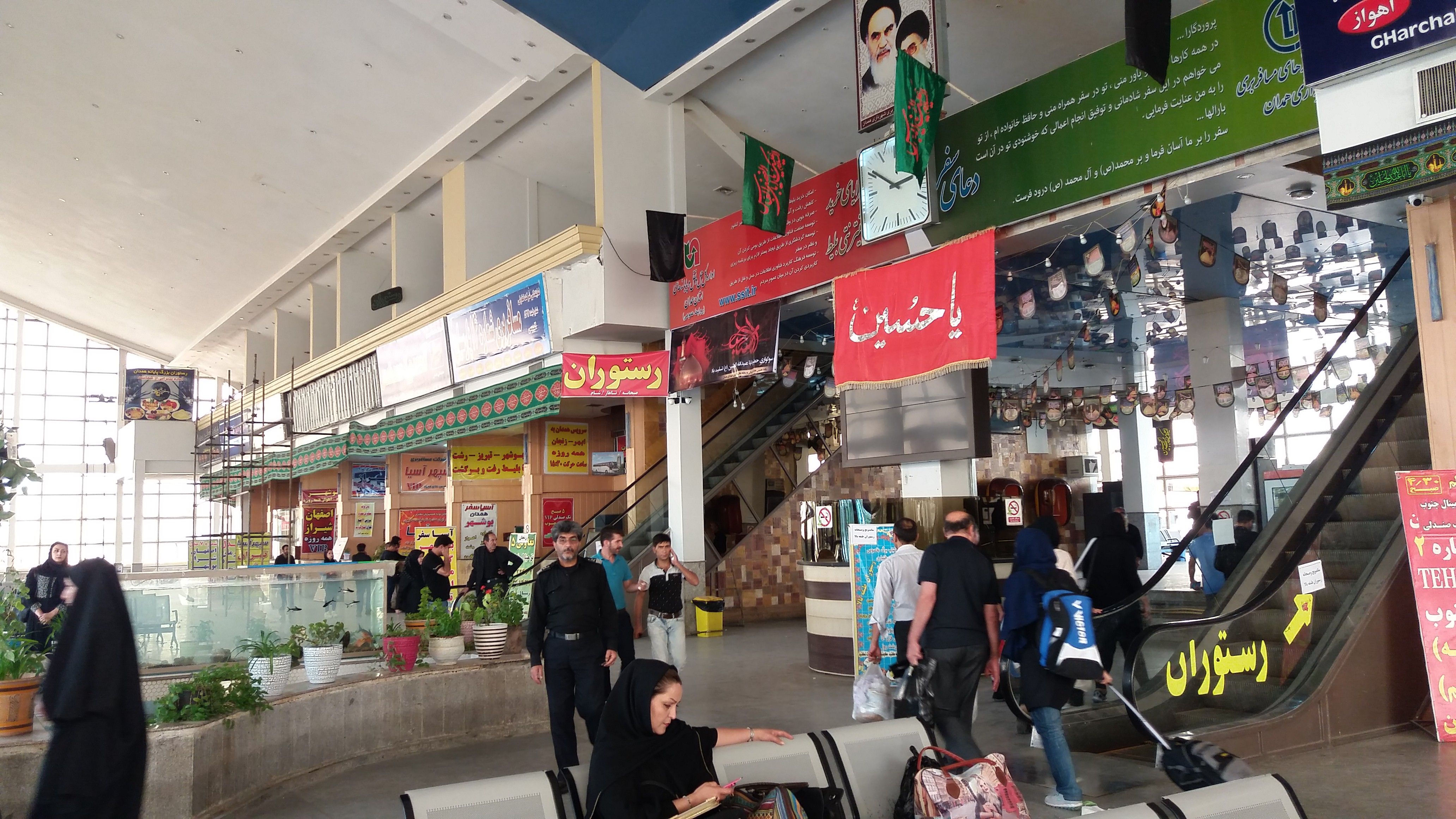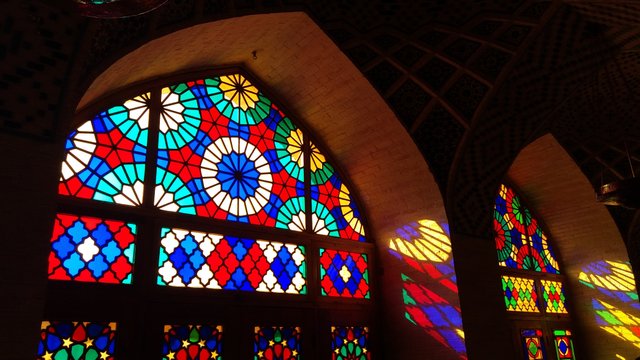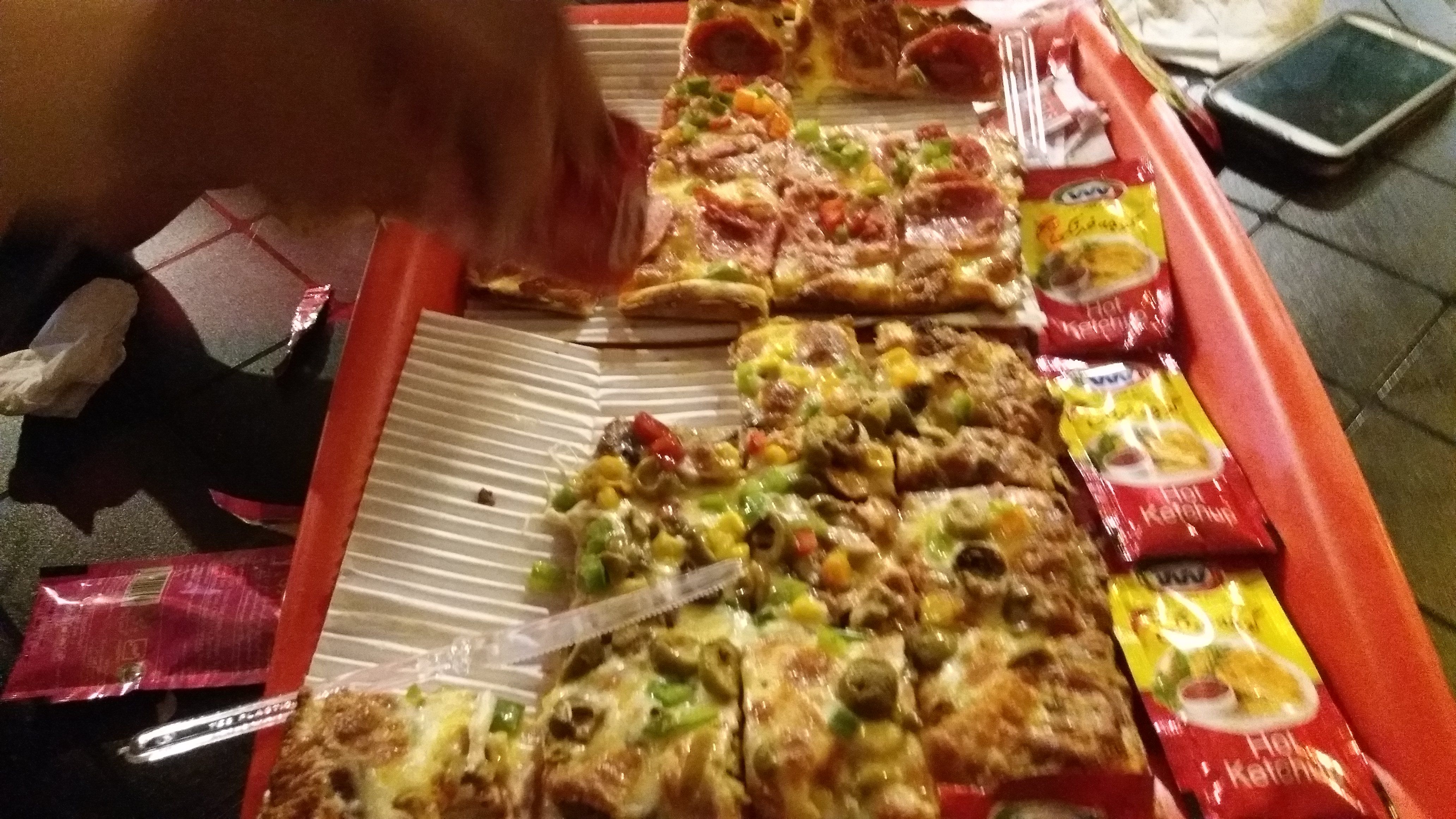Iran: A Different Story to the Common Misconception | Part 3
I am posting this in the hope of reaching readers especially from the US, so they have a chance to reevaluate their opinions about Iran--the land of many misconceptions and one sided reporting. I have journeyed there last year and want to share my experiences with you in the hope that it will give you a better insight into the daily lives of Iranians and their culture.
Click here to read part 1 and part 2

People waiting at a bus terminal in Hamedan
Society since then has changed quite considerably here in the “West”. Not all too long ago there were restrictions in place which in hindsight seem quite strange. Especially because we take them for granted in today’s world. Women in Germany, for example, could not get a driver’s license without their husband’s consent until 1958. And it took almost another 20 years until they could work without a permission from their spouse.[3] These laws seem quite absurd for people here nowadays. However, when visiting Iran it almost seems like travelling back to a time when such rules were still in place back in Germany (and in Europe as a whole). I guess what I want to say is that the social situation in Iran today is somewhat comparable to the one we had in the West half a century ago. Perhaps because religion played a bigger role back then, similarly to what it does today in Iran (at least officially). In the same way that I look at some of the rules we had in place many decades ago in Germany, I think many young people in Iran also look at some of their rules as being outdated. I felt that this generation expressed the desire for societal change in many areas, one of them being the strict dress code which especially women have to follow. In their view the hijab should be more of an optional choice rather than being something mandatory. Moreover, they weren’t satisfied with rules regarding to gender segregation (e.g., in universities men and women walk through different entrances). They also hoped to have access to uncensored information (internet, TV broadcasts) and wanted a right to freedom of speech and self-expression. Of course these are just some of the examples people felt very strongly about.

Inside the famous Nasir ol molk mosque in Isfahan
Another thing that has to be laid open is the dire situation of fast food in Iran. It is actually terrible. Like in completely gut wrenching awful. Normally I associate fast food with food that tastes good, but is unhealthy for me. In Iran fast food is unhealthy and tastes bad. I think the perfect example highlighting my point is what Iranians call a “pizza”. Believe me, it’s not a pizza. It might be considered as bread with vegetables and cheese, but it is not a pizza in the Italian sense. Probably what shocked me the most was with what ease and naturalness people there put ketchup and salad dressing (yes!) on a “pizza” and thought that this is how a “pizza” was supposed to be eaten. There aren’t any after thoughts like “Is this actually a good idea”, or “can it be considered sane to do this?” — no, people think that this is how it’s done. Of course I guaranteed every Iranian I met that I would be delighted to invite them over for dinner and make them a real pizza (at least as best I can make it, I am no Italian). The rest of the fast food assortment there is just slightly better but equally awful. The thing I really don’t get is why people would actually abuse themselves with this kind of food if they have this wonderful and amazingly tasty traditional Iranian cuisine. It is amazing and is some of the best food there is on our lovely planet. They have all kinds of different stews and kebabs which are usually served with rice (usually the first layer is colored yellow by adding a little bit of saffron). I especially loved the slices of potato [t3] which were fried in some oil and added on top of the rice (Iranians call this tah dig). Then, there are usually some greens which are served with every meal. The diverse arrangement of herbs add a distinct freshness to the meal and makes one feel healthier only by looking at them. I also learned that many Iranian dishes are somewhat more sour compared to European dishes. This is because they add some vinegar to many of the sauces or stews and even pour some of it directly into the food at the table (I had seen this done with “Ash”, a special kind of soup). So while this might seem somewhat unusual, the taste buds quite quickly adapt to this way of cooking. If there are any Iranians reading this in Germany or are considering moving abroad, I would sincerely suggest that they think about opening a Persian restaurant. I can’t speak for all of the European countries, but from what I have seen and heard there are almost no Persian restaurants to be found here. I can guarantee that it would be a success, considering that you have the necessary set of skills to make the dishes of course.

A Pizza that I wouldn't really recommend, but then again tastes differ ;)
Did you know that shaking your head horizontally doesn’t necessarily mean “no” in Iran? I didn’t know until someone had told me. I had thought that this head shake was a rather universal way of saying no. But it turns out that moving your head up vertically and then pulling it down again is how people say no over there. Raising your eyebrows has the same meaning, but I haven’t seen it done too often. Similarly, moving your head vertically downwards and back again is considered to be a “yes”. I got really confused about this at first because it didn’t seem very intuitive to me. To the delight of some I genuinely had to think for a second or two before answering some simple yes or no questions with the right head nod. After a while I got it figured out, and holding your head up really does feel more like a no. I suppose it reminded me of the arrogant gesture when someone is holding up their nose high in the air. Something I was surprised about not seen done more often was the “ruboosi”, the French equivalent of kissing one’s cheek (normally more than once). I can only remember two or three situations when I was thinking to myself “ok, I’m in one of those ruboosi situations; act cool, just go in and do what the other person is doing”. Of course it was pretty harmless and actually is a nice way of greeting someone. I wish we would do it more often here in Germany as well as it is much more of a warmer greeting than just raising your hand and saying a bland “hi”. It actually feels somewhat strange now to just say something verbally without getting physically into contact with someone. One of my favorite gestures I encountered was placing your hand over your heart as a sign of great respect and warm-heartedness when saying goodbye to someone. It just instantly makes for a great feeling and creates a bond which is hard to achieve in a different kind of way. We could use some of this warmth here in the north where the perpetual rain and snow makes us seem quite cold in comparison I guess.
stay tuned for part 4!
[3] http://neuneinhalb.wdr.de/lexikon/G/gleichberechtigung.php5
@originalworks
The @OriginalWorks bot has determined this post by @tobetada to be original material and upvoted(1.5%) it!
To call @OriginalWorks, simply reply to any post with @originalworks or !originalworks in your message!